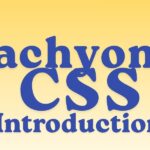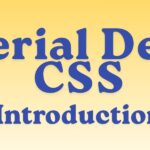
Cirrus (often referred to as Cirrus UI or Cirrus CSS) is a component-and-utility centric SCSS / CSS framework for building responsive web UIs. (GitHub)
- It is designed to be lightweight, modular, and customizable. (LinuxLinks)
- You can use it via a CDN import or integrate it in your build system (as SCSS) to customize more deeply. (Cirrus)
- The goal is to let you “spend more time building and less time worrying about CSS.” (Cirrus)
Core philosophy / design structure
To understand Cirrus well, it helps to know how it’s organized conceptually:
- Base styles
These include the resets, default typography, color system, spacing, layout helpers (margins, paddings), grid, etc. (Cirrus) - Components
Prebuilt UI elements like buttons, cards, modals, tabs, avatars, forms, etc. You use semantic classnames to bring them into your HTML. (Cirrus) - Utilities (or helper / atomic classes)
These are small classes that adjust specific CSS properties (e.g. margins, widths, display, opacity, etc.). You can “tweak” existing components or build custom elements using just utilities. (Cirrus) - Configuration / customization
Because it’s SCSS-based, you can override defaults, disable parts you don’t need, extend utilities, etc. (GitHub)
Getting started: setup & first steps
Here’s how to include and begin using Cirrus in a project:
Option A: Quick via CDN / direct CSS
You can just drop Cirrus’s CSS in via a CDN link (plus any fonts) in your HTML:
<link rel="stylesheet" href="https://cdn.jsdelivr.net/npm/cirrus-ui/dist/cirrus.min.css">You may also include font imports (e.g. Nunito Sans, Montserrat) or icon fonts, depending on what Cirrus components use. (Cirrus)
Then in your HTML, you can start using Cirrus class names (for example, .hero, .button, .card, etc.) right away. (Cirrus)
Option B: Using SCSS / build integration (for customization)
If you’re using a build system (Webpack, Vite, etc.), you can import Cirrus as a module and configure it:
@use "cirrus-ui/src/cirrus-ext" as * with (
$config: (
// you can override or disable parts here
)
);
You can enable/disable specific utilities or components, or extend existing ones (e.g. adding custom opacity levels) via that configuration object. (Cirrus)
This approach gives you more control and helps you reduce unused CSS in your final build.
Key features & highlights
Here are some of the notable features that make Cirrus interesting:
| Feature | What it Enables / Why Useful |
|---|---|
| Responsive by default | Cirrus’s components and utilities adapt to different screen sizes without you writing media queries in many cases. (Cirrus) |
| Small footprint | It is relatively light. Some sources note its small compressed size. (LinuxLinks) |
| Modular & configurable | You can exclude components/utilities you don’t need, and change default settings. (GitHub) |
| Utility + component hybrid | You get ready UI elements and also fine-grained classes for tweaking. (DEV Community) |
| No JavaScript dependencies for many features | Many of the UI components are CSS-only (for interaction, transitions, etc.). (GitHub) |
Basic examples
Here are a few simple snippets to show how things look in Cirrus.
Hero / section + content
<div class="bg-gray-100 min-h-100p">
<section>
<div class="hero">
<div class="hero-body">
<div class="content lg:px-12 xl:px-24">
<h1 class="headline-3">Hello, Cirrus!</h1>
<p class="lead">A CSS framework that’s easy to use and customize.</p>
</div>
</div>
</div>
</section>
</div>
Here:
bg-gray-100is a background color utility.min-h-100pis a “minimum height = 100%” utility.hero,hero-body,content,headline-3,leadetc. are from component / base styles. (Cirrus)
Button
<button class="button is-primary">Click me</button>Grid / columns / layout
Cirrus supports grid and flex utilities. For example:
<div class="u-flex u-gap-1 u-flex-wrap">
<div class="p-3 u-round-full u-shadow-md bg-blue-100"></div>
<div class="p-3 u-round-full u-shadow-md bg-blue-300"></div>
<div class="p-3 u-round-full u-shadow-md bg-blue-500"></div>
<!-- etc. -->
</div>
Here, utility classes like u-flex, u-gap-1, u-round-full, u-shadow-md are used to control layout, spacing, shape, and shadow. (Cirrus)
When & why to use Cirrus (pros & considerations)
Here are some pros and things to watch out for:
Pros
- You get a nice balance: you don’t have to build every component from scratch, yet you still have flexibility through utilities.
- Because it’s SCSS-based and modular, you can tailor the CSS you include (reducing bloat).
- Good for rapid prototyping or projects where you want a consistent design system without heavy overhead. (LinuxLinks)
- The design aesthetic is clean and modern; users have commented on its fresh look. > “When I compare it to bootstrap … Cirrus has a fresher look.” (Reddit)
Things to consider / trade-offs
- Because it’s less known than major frameworks like Bootstrap or Tailwind, community support, ecosystem (themes, plugins) may be smaller.
- You may occasionally need to override or extend styles if your design diverges.
- Learning the set of component class names and utility naming is a bit of a ramp (but that’s common with any CSS framework).
- If your project is very custom, you may rely heavily on utilities or custom CSS anyway, which may reduce the advantage of having a component framework.
What to learn next (your roadmap)
If you’re getting started, here’s a suggested path:
- Read the “Getting Started / Start Guide” in the Cirrus documentation — it illustrates how base, component, and utilities interplay. (Cirrus)
- Explore the documentation of components — buttons, cards, modals, forms — and try using them.
- Experiment with utility classes — spacing, sizing, display, layout, etc.
- Try customizing with SCSS — override defaults, disable unused features.
- Build a small project / prototype using Cirrus (e.g. landing page, portfolio) to get comfortable with integrating components + utilities.







Easy to understand design structure. thank you
Your notes offer such a unique and insightful perspective. I hadn’t thought about it that way before.